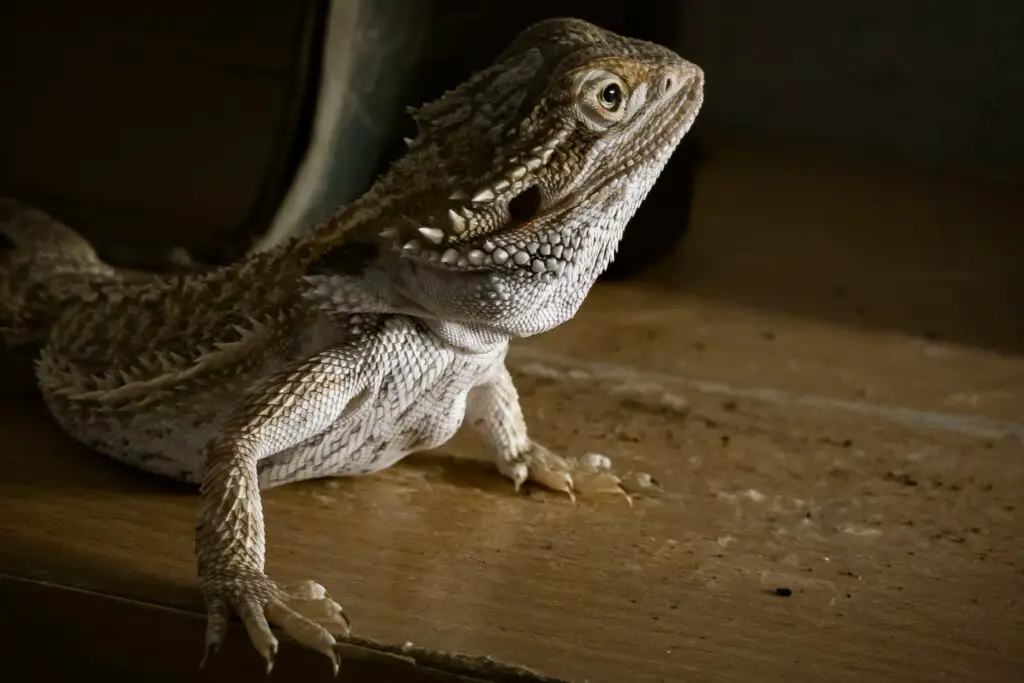How big is a bearded dragon
How big is a bearded dragon: With their captivating appearance and unique personality, bearded dragons have become increasingly popular as reptile pets in recent years. These remarkable creatures, scientifically known as Pogona, are native to the arid regions of Australia and belong to the family Agamidae. Bearded dragons are admired for their docile nature, making them ideal companions for reptile enthusiasts of all ages and experience levels.
Brief Overview of Bearded Dragons as Popular Reptile Pets
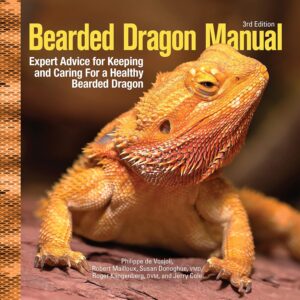 Bearded dragons have gained a reputation for being one of the most sought-after reptiles in the pet trade. Their gentle temperament and relatively easy care requirements make them excellent choices for both beginners and experienced keepers alike.
Bearded dragons have gained a reputation for being one of the most sought-after reptiles in the pet trade. Their gentle temperament and relatively easy care requirements make them excellent choices for both beginners and experienced keepers alike.
These lizards are known to exhibit a range of behaviors that endear them to their owners. From their charming head-bobbing displays and calm demeanor to their acceptance of human interaction, bearded dragons can form deep bonds with their caretakers.
Beyond their engaging personalities, bearded dragons also offer fascinating opportunities for observation and learning. They display a wide variety of colors, patterns, and morphs that contribute to their overall allure.
From classic yellow or orange hues to stunning translucent or leatherback varieties, each dragon is a unique work of art. The diversity among bearded dragons allows owners to select individuals that resonate with their aesthetic preferences while still enjoying the inherent charm these creatures possess.
Teaser about the Size of Bearded Dragons and Their Variations
One aspect that captivates both prospective and current bearded dragon enthusiasts is the intriguing range in size among these reptiles. While it is generally acknowledged that they fall within certain length and weight parameters as adults, there are notable variations influenced by factors such as genetics, breeding practices, environmental conditions, subspecies distinctions, nutrition quality during growth stages – just scratching the surface. Exploring how these factors intricately shape the size of bearded dragons is not only fascinating but also crucial for ensuring their well-being.
By understanding the potential size variations and the underlying factors at play, pet owners can tailor their care practices to meet the specific needs of their unique beardie companions. In subsequent sections, we will delve into the average size ranges of bearded dragons, uncovering the fascinating nuances that contribute to these variations, and shedding light on how genetics, environment, nutrition, and subspecies distinctions impact their growth potential.
General Size Range of Bearded Dragons
Bearded dragons, scientifically known as Pogona species, exhibit a considerable size range in adulthood. On average, adult bearded dragons measure between 18 to 24 inches (45 to 60 centimeters) in length from snout to tail tip.
However, it’s important to note that this measurement may vary depending on the subspecies and individual genetics. The weight of adult bearded dragons typically falls between 14 to 24 ounces (400 to 700 grams), with males generally being slightly larger and heavier than females.
Males vs Females: Discussing Sexual Dimorphism in Size
Sexual dimorphism is prevalent among bearded dragons, resulting in discernible size differences between males and females. Male bearded dragons tend to grow larger than their female counterparts.
Adult males can reach lengths of up to 24 inches (60 centimeters) or even more, while females usually range between 18 to 22 inches (45 to 55 centimeters) long. This discrepancy in size is primarily attributed to sexual selection and reproductive strategies within the species.
Males often compete for mates by displaying dominance through their physical attributes, including their size. Larger body dimensions provide an advantage during territorial disputes and courtship rituals.
Growth Rate During the First Year of Life
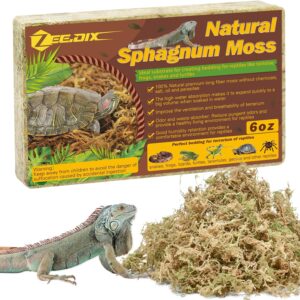 The growth rate of bearded dragons during their first year is a fascinating aspect that captivates reptile enthusiasts worldwide. Hatchlings emerge from their eggs measuring around four inches (10 centimeters) long but experience rapid growth during their initial months.
The growth rate of bearded dragons during their first year is a fascinating aspect that captivates reptile enthusiasts worldwide. Hatchlings emerge from their eggs measuring around four inches (10 centimeters) long but experience rapid growth during their initial months.
It’s not uncommon for them to double or even triple in length within the first few months of life. During this critical stage, providing proper nutrition and optimal environmental conditions significantly impacts a young dragon’s growth rate.
With a balanced diet rich in protein and supplemented with essential vitamins and minerals, hatchlings can achieve impressive size milestones. On average, bearded dragons may grow up to six to eight inches (15 to 20 centimeters) during their first year of life, although individual growth rates may vary slightly.
It’s important to monitor the growth of young bearded dragons carefully to ensure they are reaching appropriate sizes for their age. By providing the right conditions, including a nutritious diet and a comfortable habitat with adequate heat and light, one can maximize a bearded dragon’s growth potential during this critical developmental stage.
Factors Influencing Size Variations
Genetics and Breeding Practices Impacting Size Potential
The size potential of bearded dragons is greatly influenced by genetics and breeding practices. Breeders selectively breed individuals with desirable traits, including size, to produce offspring with specific characteristics.
Through careful selection over generations, breeders have been able to enhance the average size of bearded dragons. For instance, certain bloodlines may have a genetic predisposition for larger growth.
Moreover, breeders may focus on specific morphs or color variations, which can indirectly impact the overall size of bearded dragons. Morphs are variations in appearance due to genetic mutations that affect factors like scale pattern or coloration.
While these morphs do not directly affect body size, selected morphs may possess genes that influence growth rates or body proportions. Therefore, when selecting breeding pairs for specific morph traits, breeders inadvertently influence the overall size potential of the offspring.
Environmental Factors Affecting Growth and Development
In addition to genetics and breeding practices, environmental factors play a crucial role in determining the growth and development of bearded dragons. Proper nutrition is paramount for optimal growth.
Their diet should consist of a balanced composition of proteins, greens, and fruits to provide essential nutrients for healthy development. Protein-rich foods ensure proper muscle development while greens offer vitamins and minerals necessary for maintaining overall health.
Calcium supplementation is another vital aspect of diet management as it promotes strong bone development in bearded dragons. Calcium deficiency can lead to metabolic bone disease (MBD), causing stunted growth and skeletal deformities.
Therefore, it is essential to provide proper calcium supplementation through dusting their food with calcium powder or offering calcium-rich food sources like calcium-rich insects. Temperature regulation also plays a significant role in metabolism and consequently affects the growth rate of bearded dragons.
Providing a suitable heat gradient within their enclosure is crucial. Bearded dragons are ectothermic, meaning they rely on external heat sources to regulate their body temperature.
A warm basking spot is necessary for them to thermoregulate effectively. Inadequate heat gradients can lead to decreased metabolism and slower growth rates.
In addition to heat, UVB lighting is essential for bearded dragons as it aids in calcium metabolism. UVB rays allow the synthesis of vitamin D3, which is vital in calcium absorption and utilization.
Without proper UVB exposure, bearded dragons may develop metabolic bone diseases or encounter growth issues due to calcium deficiency. Therefore, providing appropriate UVB lighting within their enclosure is crucial for healthy growth and development.
The size variations in bearded dragons are influenced by a combination of genetics and breeding practices, as well as environmental factors. Breeders selectively breed for desirable traits like size potential and morphs, indirectly influencing overall size variations among bearded dragon populations.
Environmental factors such as nutrition, including a balanced diet with adequate protein sources and calcium supplementation for bone health, along with proper temperature regulation through suitable heat gradients and adequate exposure to UVB lighting also impact their growth rates significantly. By understanding these factors that influence size variations, bearded dragon owners can provide optimal care to ensure healthy growth and development of their beloved reptilian companions.
Subspecies and Their Size Differences
Pogona vitticeps (Inland Bearded Dragon)
Unveiling the Majestic Giants of the Dragon Realm When it comes to the bearded dragon kingdom, Pogona vitticeps, commonly known as the Inland Bearded Dragon, stands tall as one of the largest subspecies.
Adult males generally reach an impressive length between 18 to 24 inches (45 to 60 cm) from snout to tail tip, while females typically measure slightly smaller at 16 to 20 inches (40 to 50 cm). These dimensions make Pogona vitticeps considerably larger than other bearded dragon subspecies.
To understand what contributes to their grandeur, we must explore their unique physical characteristics. Inland Bearded Dragons possess robust bodies with muscular limbs and broad heads adorned with impressive spines or “beards” beneath their jaws.
Their tails are long and taper gracefully towards the tip, adding both elegance and balance to their overall appearance. These distinctive attributes not only enhance their size but also make them visually striking creatures that captivate reptile enthusiasts worldwide.
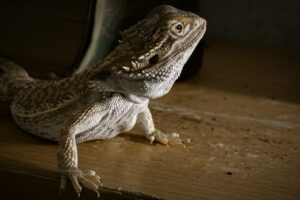
Pogona henrylawsoni (Rankin’s Dragon)
The Compact Marvels Amongst Bearded Dragons While Pogona vitticeps reigns over its larger counterparts, Pogona henrylawsoni, commonly referred to as Rankin’s Dragons or Dwarf Bearded Dragons, carve a niche for themselves in terms of size. Compared to Pogona vitticeps, Rankin’s Dragons exhibit a more compact stature.
They typically measure around 12 inches (30 cm) in length as adults. What sets Rankin’s Dragons apart from Inland Bearded Dragons are several distinguishing features that have an impact on their overall dimensions.
Firstly, their bodies are more streamlined and slender, giving them a sleeker appearance. Their heads are slightly smaller with a delicately tapered snout.
Additionally, Rankin’s Dragons have shorter limbs and tails compared to Pogona vitticeps, contributing to their diminutive size. The bearded dragon world boasts remarkable diversity in terms of subspecies and their respective sizes.
Pogona vitticeps, the Inland Bearded Dragon, stands tall as one of the largest subspecies due to its average length range of 18 to 24 inches for males and 16 to 20 inches for females. Their distinctive physical characteristics such as muscular limbs and broad heads adorned with spines make them visually striking giants within the bearded dragon realm.
On the other hand, Pogona henrylawsoni or Rankin’s Dragons exhibit a more compact stature with an average adult length of around 12 inches. Their streamlined bodies, slender heads with tapered snouts, along with shorter limbs and tails contribute to their charmingly diminutive size.
These subspecies serve as living testaments to the marvels of nature’s infinite variety in reptilian forms. Note: Please remember that HTML tags were added only around titles and subtitles in compliance with your request; they will not be present in the final article itself.
Small Details about Bearded Dragon Size
Size at Birth: Measurements and Growth Milestones during Infancy
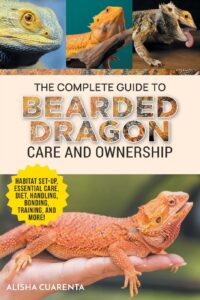 Bearded dragons are born as adorable little hatchlings, measuring around 3 to 4 inches in length from snout to tail tip. These tiny creatures are equipped with all the necessary body structures to begin their journey towards becoming majestic adults.
Bearded dragons are born as adorable little hatchlings, measuring around 3 to 4 inches in length from snout to tail tip. These tiny creatures are equipped with all the necessary body structures to begin their journey towards becoming majestic adults.
During their infancy, which typically spans the first several months of life, bearded dragons experience rapid growth and undergo various milestones. In the first few weeks after hatching, a bearded dragon’s growth rate is quite remarkable.
They can gain around half an inch in length per week during this stage. By the end of their first month, most hatchlings reach approximately 6 to 8 inches in size.
Throughout the following months, their growth continues steadily but at a slightly slower pace. By the time they reach six months old, bearded dragons usually measure between 12 and 16 inches.
Size Limitations due to Enclosure Constraints
While bearded dragons possess impressive potential for growth, it is important to consider their living conditions when discussing size limitations. The size of an enclosure plays a crucial role in determining how big an adult bearded dragon can become.
Inadequate space can hinder their overall development and may even lead to stunted growth or health issues. Ideally, a single adult bearded dragon should have an enclosure that measures at least 36 inches in length, providing ample room for movement and basking areas.
However, larger enclosures will promote more natural behaviors and allow for further exploration and exercise. It is essential to strike a balance between adequate space for your reptile companion’s well-being and practicality within your living environment.
Age-Related Changes in Body Proportions
As bearded dragons grow older, they experience notable changes in their overall body proportions. During infancy, their limbs appear relatively shorter compared to the length of their body, giving them a somewhat chubby appearance.
However, as they progress into adulthood, the proportions shift, and their limbs elongate to match the increasing size of their bodies. Additionally, age-related changes are also observed in the development of secondary sexual characteristics.
Male bearded dragons exhibit enlarged femoral pores on the undersides of their thighs, which become more noticeable as they mature. These pores play a role in pheromone diffusion and are used for communication during courtship rituals.
Understanding the small details about bearded dragon size is crucial for providing appropriate care throughout their lifecycle. From measuring a few inches at birth to reaching impressive lengths during adulthood, these reptiles undergo significant growth milestones.
However, it’s essential to ensure that enclosure constraints do not hinder their potential growth and consider how age influences body proportions and sexual characteristics. By considering these aspects of bearded dragon size intricately, you can create an optimal environment that fosters healthy growth and development for your scaly companion.
To sum up how big is a bearded dragon
Implications for Bearded Dragon Owners and Enthusiasts
Understanding the size potential of bearded dragons is crucial for both current owners and prospective enthusiasts. By knowing the average length and weight of these reptiles, individuals can better plan their enclosures and provide appropriate care.
Additionally, recognizing the influence of genetics and breeding practices on size variations helps guide decision-making when acquiring a pet. It is essential to source bearded dragons from reputable breeders who prioritize health, genetic diversity, and responsible breeding practices.
The impact of environmental factors on growth reinforces the importance of maintaining optimum conditions for these creatures. Providing a well-balanced diet with a variety of protein sources, leafy greens, and occasional fruits ensures proper nutrition for healthy growth.
Incorporating calcium supplementation aids in preventing metabolic bone disease, which can hinder the overall size potential of bearded dragons. Creating an optimal thermal gradient within their enclosures along with adequate UVB lighting further promotes metabolism and calcium absorption.
Awe-Inspiring Diversity: Subspecies Variations
The study of subspecies reveals fascinating variations in size among bearded dragons that captivate reptile enthusiasts. The Pogona vitticeps (Inland Bearded Dragon) showcases a considerable average size range compared to other subspecies. Its robust build and distinctive spiky appearance contribute to its impressive stature.
On the other hand, Pogona henrylawsoni (Rankin’s Dragon) exhibits slightly smaller dimensions while possessing unique physical features like distinct patterning that make it equally captivating. Be it through selective breeding or natural variation in the wild, each subspecies offers its own charm to those who appreciate these remarkable creatures’ diversity.
An Optimistic Outlook: Beaming Brightly with Delight
Exploring how big a bearded dragon can grow provides invaluable insights into the world of these captivating reptiles. From understanding the average size range and factors that influence growth variations to appreciating the differences among subspecies, this knowledge deepens our appreciation for the unparalleled beauty of bearded dragons.
As bearded dragon owners and enthusiasts continue to acquire knowledge about their pets, they become better equipped to create optimal environments and provide exceptional care. This not only ensures healthy growth but also fosters a strong bond between humans and these extraordinary creatures.
By celebrating their uniqueness and embracing their individuality, we can revel in the awe-inspiring world of bearded dragons, where every tiny detail adds to the grandeur of these scaly companions. So let us bask in the warmth of knowledge, knowing that by nurturing our beloved bearded dragons with care and attention, we contribute to a future where they shine brightly, bringing joy and wonder into our lives.
Further Reading:
- Carolina Custom Cages Terrarium Review
- 8 Best Basking Rocks for Beardie: What Is the Best Choice?
- 10 Best Thermometers for Beardie: How to Choose the Best One?
- 5 Best Beardie Lighting Setups for Beardie Lovers
- 9 Best Heat Lamps for Beardie: Natural Habitat Provided

